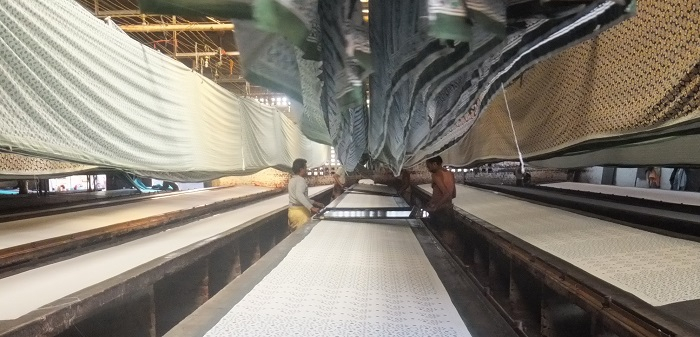

Many fashion designers are confused by the terms “block” and “slopper,” hence this explanation of each term is provided. In essence, a block and a sloper are different. To read more, you might also want to look up words like “sloper” and “block.”

The block or sloper pattern is the previously designed sewing pattern for the garment design that has been refined for a suitable fit. Block patterns and slopers are frequently used to create new garment styles with fewer pattern changes and fixes.
A simple planar method design called a “sloper,” commonly referred to as a “block,” is used to manipulate an existing foundation pattern. The sloper serves as the foundation for designing flat patterns. Through drafting, a basic pattern, also known as a “block,” “master,” or “foundation pattern,” can be created.
Blocks typically have no design features other than those necessary for fitting and are created using a simple master template. Blocks are typically made of thin cardboard rather than paper, so that patterns can be created by tracing around them. The Basic Block or Sloper Set consists of seven pieces: a bodice front, a bodice back, a sleeve, a skirt front, a skirt back, a pair of pants front and back, and a pair of pants back. The terms “block” and “sloper” are more frequently used in Australia, the UK, and the United States, respectively.
Sloper − A sewing sloper may also be referred to as a sewing block, a pattern block, a basic block, a foundation pattern, or any combination of the aforementioned words. A pattern for any item without a seam allowance is referred to by this word. It will be put to use in describing a pattern on clothing.
Block − A pattern for any item with seam allowances that will be used again to make new patterns is referred to by this word. You can have a jacket block, which is an entire jacket pattern that you can use to create new jacket patterns by simply making small changes to the jacket block rather than drafting a jacket completely from scratch once again.
Your bodice block may be the same as your bodice sloper with seam allowance added. You can buy an item from the same brand season after season that fits exactly the same way because, in business, the block is determined by which style sells well. Each season, they make small adjustments to the block to style it differently.
Major features are
A sloper is a 2D representation of a 3D form, just like all patterns. It acts as your body’s basic measuring tool, almost like a second skin. For instance, a bodice sloper reveals your torso’s length, width, and shape as well as the bust points and length of darts. You can use a bodice sloper as the foundation for creating a pattern for a top or jacket, or you can combine it with a skirt sloper (a fabric representation of your waist, hips, and thighs) to make a dress. However, since it isn’t intended to be a garment, movement and seams aren’t taken into account. As you might have guessed, the foundation of any type of pants pattern is a pants sloper. Commercial pattern makers use slopers that fit the “average” body shape, which explains why customising a store-bought pattern always requires some effort.
The block pattern is the previously developed sewing pattern for the garment design that has been refined for a good fit. This blog will provide some basic definitions of block pattern engineering for clothing. The block pattern is frequently used to effectively create a new clothing style with little need for pattern revisions and corrections. The name you give your best-selling design at that point is entirely up to you. The entire supply chain for the garment industry is changing quickly, as is how the clothing is made. Making it happen requires originality, engineering skill, and thinking beyond the box. Similar to this, all methods of creation are changing, notably with the development of 3D CAD technology.
To conclude, the word “block” is widely used, so you should make it clear that you’re talking about sewing and not a toy for kids to build with. The word “sloper” is uncommon in everyday usage. Any design you imitate could be considered a “pattern.” So the terminology can get twisted around in the sewing world, and what people are trying to clarify just gets more mixed up. Understanding this will help you cut through the confusion: A basic fitting sloper is used to create numerous silhouette blocks that can be used to generate countless design patterns.